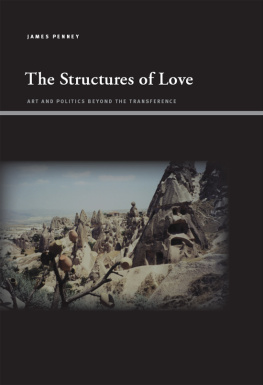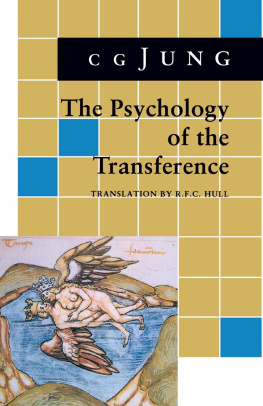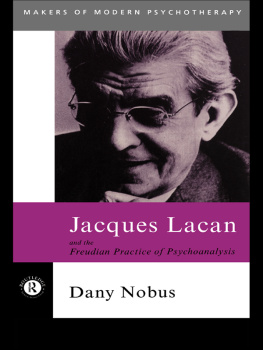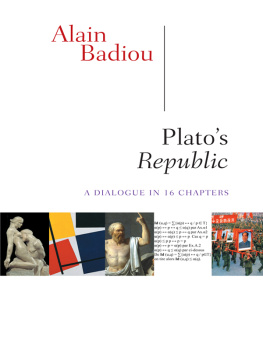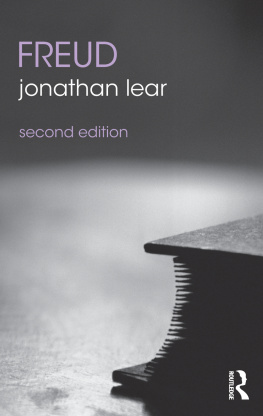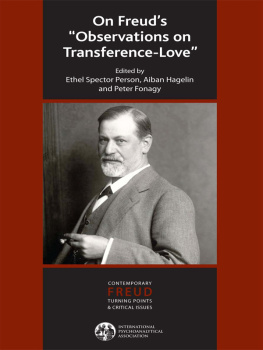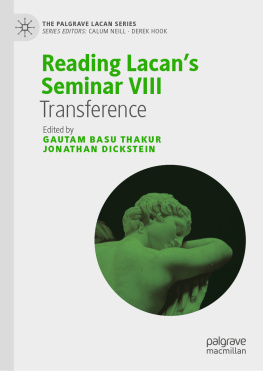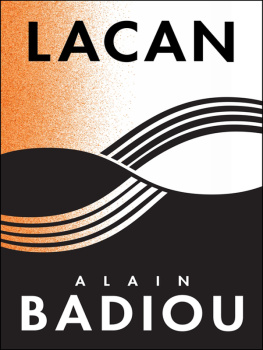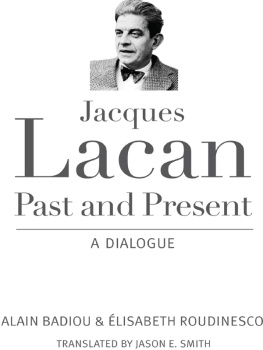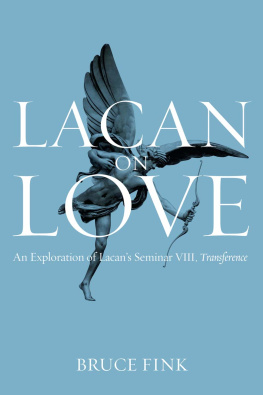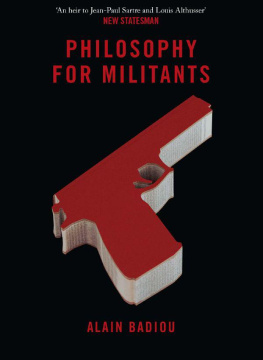SUNY series, Insinuations:
Philosophy, Psychoanalysis, Literature

Charles Shepherdson, editor
The Structures of Love
Art and Politics beyond the Transference
James Penney

Cover photograph courtesy of David G. Mills.
Published by State University of New York Press, Albany
2012 State University of New York
All rights reserved
Printed in the United States of America
No part of this book may be used or reproduced in any manner whatsoever without written permission. No part of this book may be stored in a retrieval system or transmitted in any form or by any means including electronic, electrostatic, magnetic tape, mechanical, photocopying, recording, or otherwise without the prior permission in writing of the publisher.
For information, contact State University of New York Press, Albany, NY
www.sunypress.edu
Production by Eileen Meehan
Marketing by Fran Keneston
Library of Congress Cataloging-in-Publication Data
Penney, James, 1971
The structures of love : art and politics beyond the transference / James Penney.
p. cm. (SUNY series, insinuations: philosophy, psychoanalysis, literature)
Includes bibliographical references and index.
ISBN 978-1-4384-3973-0 (hbk. : alk. paper)
1. PsychoanalysisPhilosophy. 2. Love. I. Title.
BF175.P4157 2012
150.19'5dc22 2011009759
10 9 8 7 6 5 4 3 2 1
List of Illustrations
Acknowledgments
An earlier version of was published as The Failure of Spectatorship, Communication Theory 17, no. 1 (February 2007): 4360; reprinted with permission of John Wiley & Sons, Inc.
Diagrams from Lacan's seminar are from The Four Fundamental Concepts of Psychoanalysis by Jacques Lacan, translated by Alan Sheridan. Copyright 1973 by Editions du Seuil. English translation copyright 1977 by Alan Sheridan. Used by permission of W. W. Norton & Company, Inc.
A Standard Research Grant from the Social Sciences and Humanities Research Council of Canada provided the resources necessary to complete this project. Special thanks to Beaverbrook Art Gallery and Lucian Freud for permission to feature reproductions of his stunning work. My research assistants Susanna Ashley and Jacob Potempski provided invaluable help. Trent University students too numerous to name expressed views that contributed to my thinking about the transference and forced me to invent new ways of talking about psychoanalysis and Lacan. Finally: hello Ian and Violet! And thanks, Dave, who likely wouldn't want me to go on.
Preface
The premise of this book is that transference is the concept with which psychoanalysis thinks through the unconscious demands that circumscribe and can sabotage our creative initiatives in the arts and politics. I aim to demonstrate that transference theory, derived from Freudian clinical experience, allows the critic of literature and culture to radicalize the disappointing poststructuralist understandings of agency as, on the one hand, performativity and resignification (Judith Butler, Derrida) and, on the other, the redirection of existing relations or vectors of power or force (Foucault, Deleuze). The method of analysis that transference theory suggests allows us to recognize the transformative potentialities of genuine artistic and political acts.
The transference's interpretation divulges our collective subjective capacity to unfurl the invigorating consequences of such events in specific social, historical, and cultural circumstances. By interpreting the transference we can remain faithful to the work of singular artists and thinkers who take up the challenge of moving beyond the ego's claims to social recognition, and therefore beyond the treasonous ambivalences and compromises that arise when we fail to pursue desire beyond the limits policed by fear and anxiety. Though no form of artistic or political practice can precisely reproduce the course of analytic treatment, the texts of culture leave discernible traces of a sort of psychical work that runs strikingly parallel to the analyst's work of interpretation. The chapters that follow aim to discern these traces, formulating in precise but accessible terms the philosophical, literary, cinematic, and painterly stratagems that have allowed the creators of concern to accomplish their challenging and inspiring innovations.
Specifically, The Structures of Love explores the aesthetic, political, and ethical ramifications of the transference idea through detailed analyses of five objects of culture from an eclectic, and no doubt idiosyncratic, range of genres and media: Plato's Symposium (via Jacques Lacan's reading), Frantz Fanon's body of work, Jean Genet's Prisoner of Love and political essays, Chantal Akerman's cinematic Proust adaptation The Captive, and the nudes of Lucian Freud in painting. The seemingly haphazard quality of this group of objects is not the result of mere whimsy. It is intended, rather, to help liberate literary and cultural studies from the moribund historicisms and contextualisms that have gained ascendancy during the last couple decades or so.
I don't think as a rule that it's the author's business to tell readers how to read his book. Given its eclecticism, however, a brief introductory comment may be in order. , curious about what there could possibly be left to say about psychoanalysis and film theory, or else about Lacan's sweeping and neglected pronouncements on the function of art. Though I tried consistently to make the connection between the theoretical and cultural aspects of the project as explicit as possible, links which I have not foreseen can and no doubt will be made. This, surely, is one of the things that readers are for.
I
The Refusal of Love
Love in the Social
It's not too much to claim that the entire project of psychoanalysis was set in motion by Freud's remarkable discovery at the outset of his investigations that the patient never fails to fall in love during treatment. Baptizing this phenomenon transference love, Freud argues that such a love cannot not occur in analysis; that the rules of the gamepatient lying on the couch, analyst seated behind, law of free association imposedguarantee that it will occur without fail. The event of love revealed in the transference is the underlying condition of possibility of psychoanalysis. My initial aim in this chapter will be to show that, despite some terminological confusion and symptomatic ambivalences, two distinct ideas of love can be discerned in the pioneering Freudian texts. There is first the enigmatic power of resistance of the transference love that initiates Freud's analytic desire to solve the riddle of his patients' symptoms. But there is another kind of love as well, and the transference concept as Lacan formalizes it in his teaching is in my view the key to distinguishing between the two.
There is a love beyond the transference, that is to say, but it emerges only on condition that we come to terms with a paradox. Though, as Freud consistently maintains, the transference functions objectively as a form of resistance against unconscious desire, perpetuating thereby the symptom's nagging neurotic agency, its manifestation remains an efficient condition of the cure. In other words, the transference reliably points the way toward its own elusive beyond. The occurrence and proper interpretation of the transference are therefore necessary prerequisites for the setting in motion of our inherent capacity to love in the ethical, and therefore political, way that this book sets out to explore in some detail.

